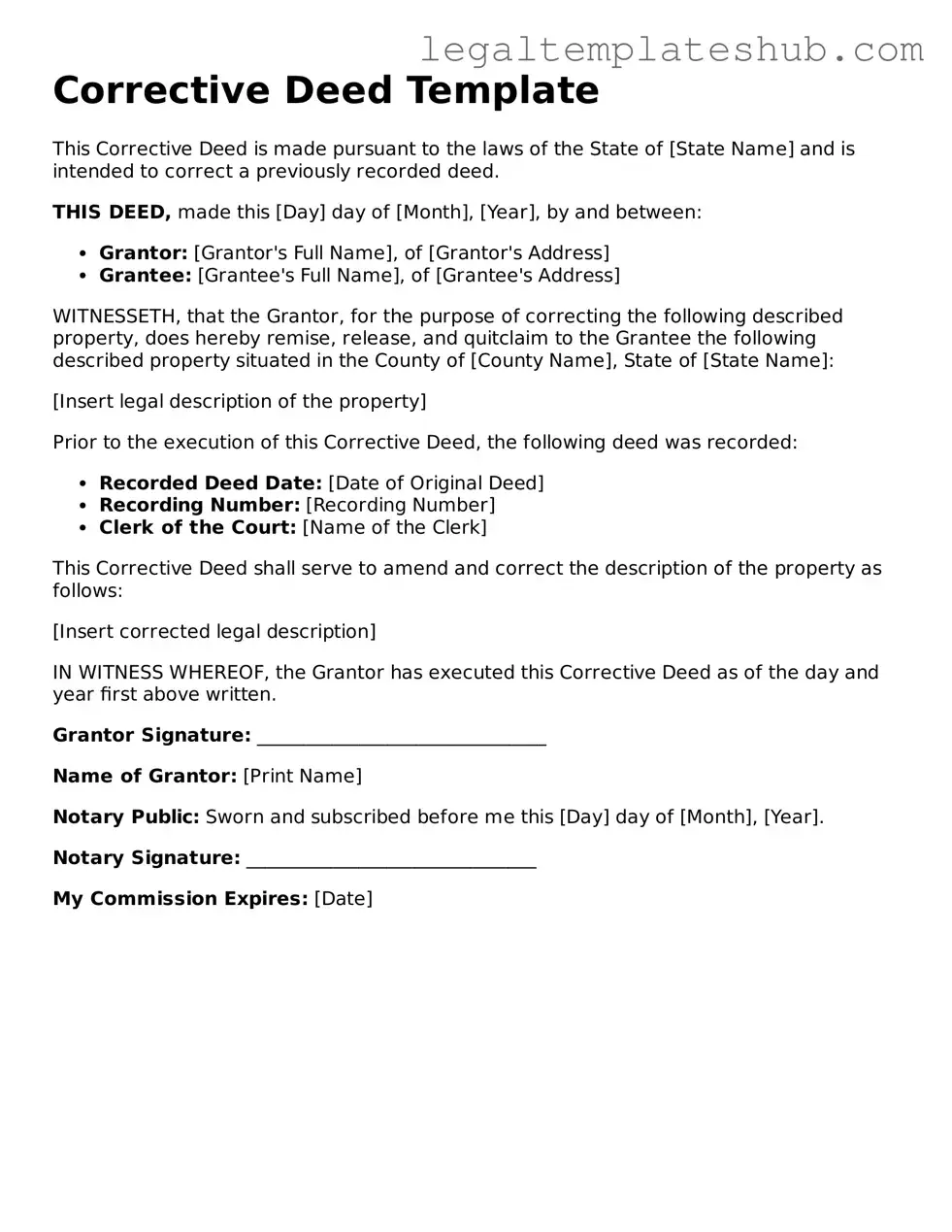Printable Corrective Deed Template
A Corrective Deed is a legal document used to correct mistakes or clarify details in an existing property deed. This form ensures that the property records accurately reflect the true intentions of the parties involved. If you need to make corrections to a deed, consider filling out the Corrective Deed form by clicking the button below.
Access Editor
